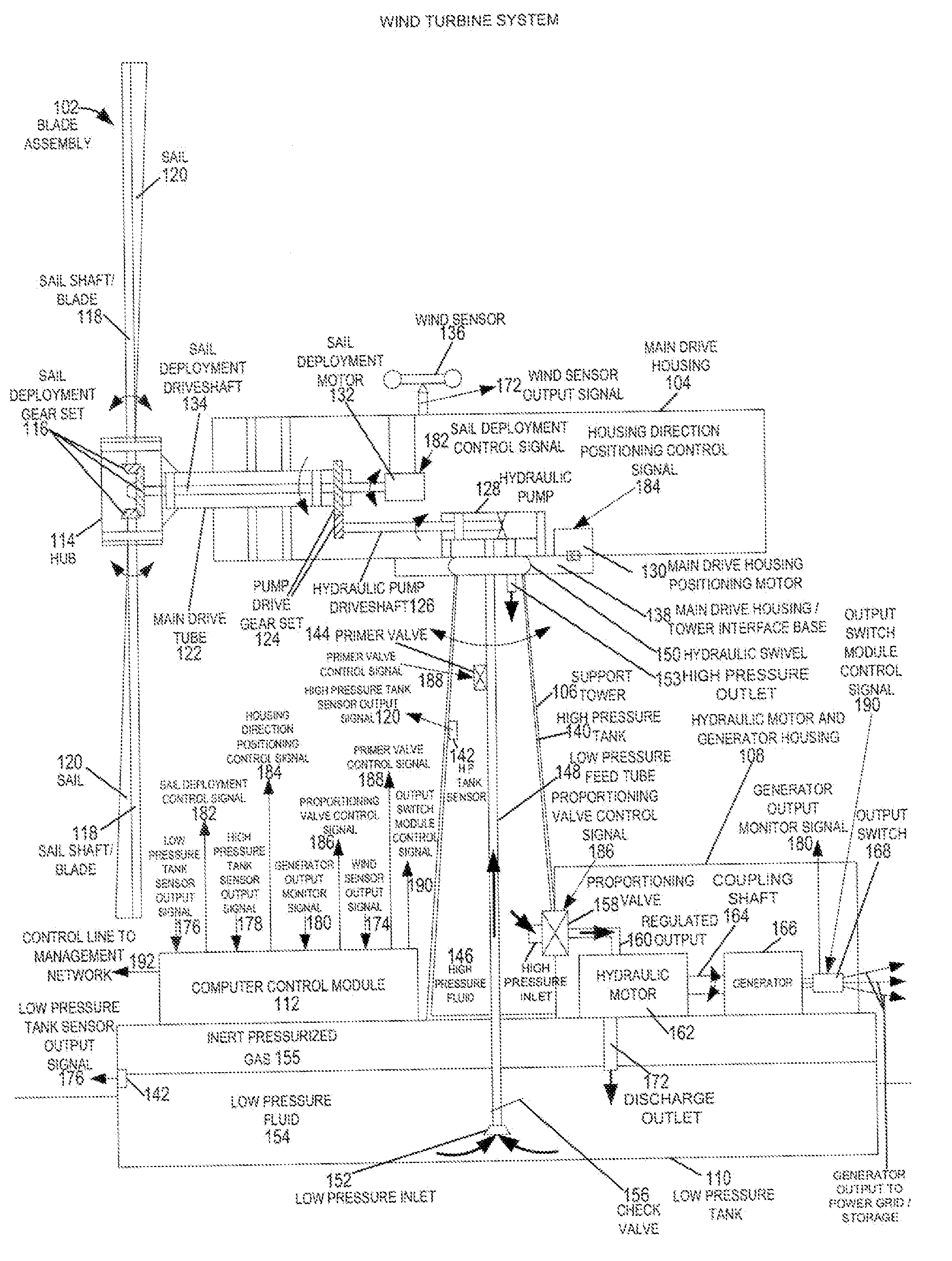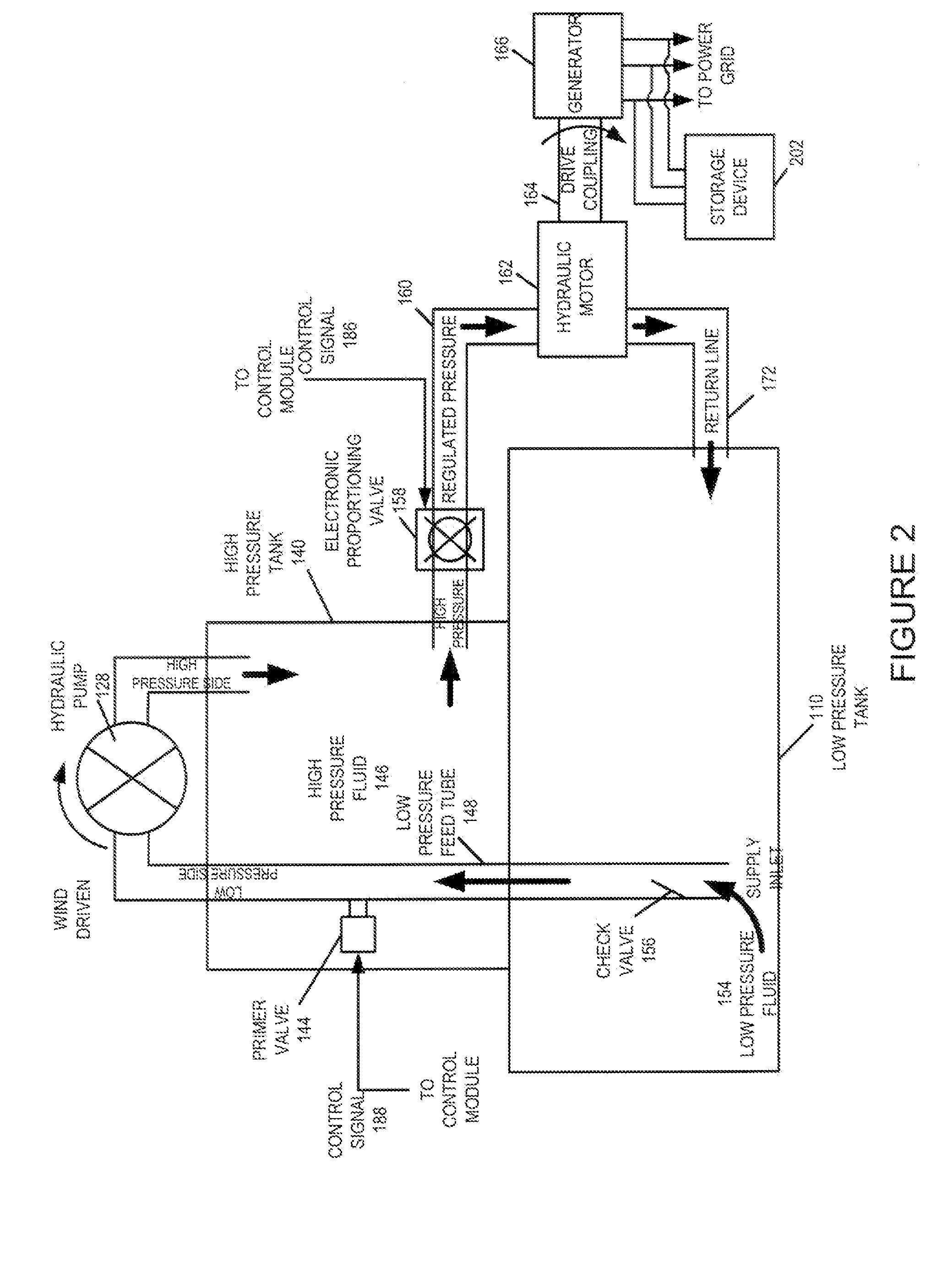Methods and apparatus for advanced wind turbine design
a technology of advanced wind turbines and wind turbines, applied in the direction of electric generator control, fluid couplings, greenhouse gas reduction, etc., can solve the problems of loss of energy, cost, complexity, and complexity of conversion stages to achieve the effect of slowing down the pressure level of high pressure tanks
- Summary
- Abstract
- Description
- Claims
- Application Information
AI Technical Summary
Benefits of technology
Problems solved by technology
Method used
Image
Examples
Embodiment Construction
[0032]FIG. 1 is a drawing of an exemplary wind turbine system 100 implemented in accordance with the present invention and using methods of the present invention. Exemplary wind turbine system 100 includes a blade assembly 102, a main drive housing 104, a support tower 106, a hydraulic motor and generator housing 108, a low pressure tank 110, and a computer control module 112.
[0033] The blade assembly 102 includes a hub 114, a sail deployment gear set 116, a plurality of sail shafts / blades 118, and a plurality of retractable sails 120. The blade assembly 102 is used to capture wind energy. The blade assembly 102, in some embodiments includes a rolling reefing sail system, whereby the area of the sails is variably adjustable. The sail shaft / blades 118, e.g., carbon fiber masts, coupled to hub 114 are attached to the sail deployment gear set 116, and can be rotated to let out or retract the sails 120 which are attached to the sail shaft / blades 118. In some embodiments, sensors are em...
PUM
 Login to View More
Login to View More Abstract
Description
Claims
Application Information
 Login to View More
Login to View More - R&D
- Intellectual Property
- Life Sciences
- Materials
- Tech Scout
- Unparalleled Data Quality
- Higher Quality Content
- 60% Fewer Hallucinations
Browse by: Latest US Patents, China's latest patents, Technical Efficacy Thesaurus, Application Domain, Technology Topic, Popular Technical Reports.
© 2025 PatSnap. All rights reserved.Legal|Privacy policy|Modern Slavery Act Transparency Statement|Sitemap|About US| Contact US: help@patsnap.com



